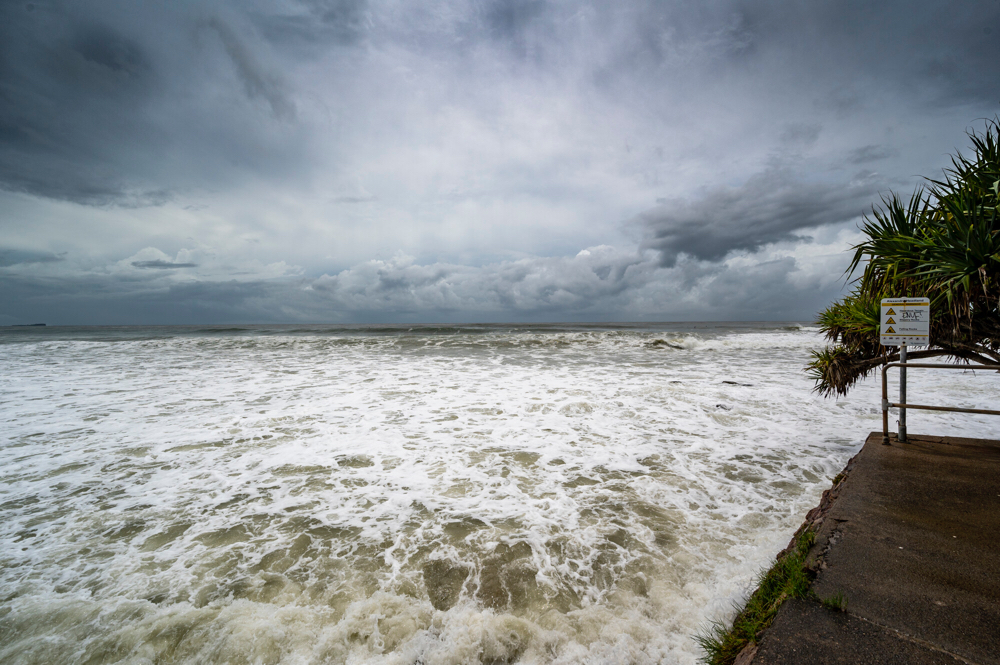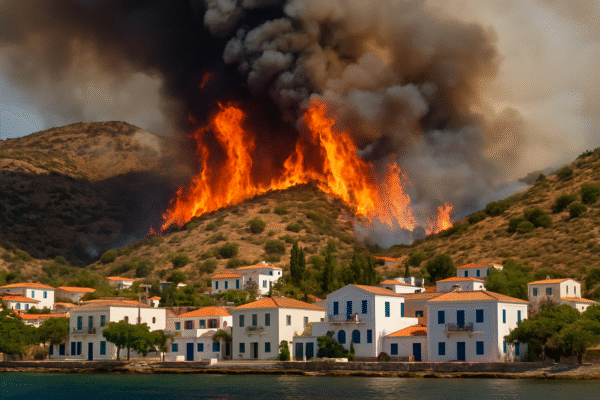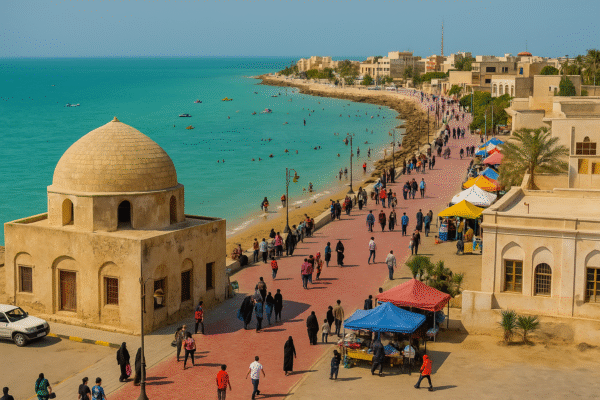Tourists Warned as Record Heatwaves Grip Southern Europe’s Top Summer Destinations
Southern Europe is facing a scorching summer in 2024, with popular tourist destinations in Greece, Spain, Turkey, Italy, and Cyprus battling record-breaking temperatures that have sparked growing travel warnings. Inland cities such as Nicosia, Rome, and Spain’s Extremadura are enduring dangerously high daytime temperatures—often exceeding 35°C—and stifling nighttime heat that hinders recovery, prompting concerns for traveler safety.
According to meteorological data from the European Environment Agency (EEA), climate change has amplified the frequency, duration, and intensity of heatwaves across southern Europe. This summer, a combination of dry inland conditions, urban heat islands, and stagnant atmospheric patterns has created a perfect storm of heat risks, particularly for elderly tourists, children, and those with medical vulnerabilities.
Nicosia, Cyprus: Europe’s Hottest Capital
The Cypriot capital of Nicosia has again claimed the title of Europe’s hottest capital, with July temperatures routinely surpassing 35°C for over 20 days. Unlike coastal cities, Nicosia lacks sea breezes to moderate daytime temperatures and cool down evenings. The Cyprus Department of Meteorology confirmed that nighttime lows remained above 30°C on multiple occasions—a dangerous scenario that prevents the human body from recovering, increasing risks of dehydration, exhaustion, and heatstroke.
Cyprus’s Cooler Choices: Paphos and Ayia Napa
Fortunately, travelers to Cyprus can still enjoy a Mediterranean escape by choosing cooler coastal cities like Ayia Napa and Paphos. Thanks to the oceanic influence, Ayia Napa’s evenings are notably cooler, while Paphos—on the southwestern coast—maintains a milder microclimate year-round. The Cyprus Tourism Organisation is actively promoting these areas as safer alternatives during peak summer months.
Portugal’s Alentejo: Inland Heat Warning
Portugal’s Alentejo region, nestled between Lisbon and the Algarve, has become a heat hotspot. Data from Portugal’s Instituto Português do Mar e da Atmosfera (IPMA) shows that Alentejo experienced more 35°C+ days than the Costa del Sol last summer. This inland stretch—famed for vineyards and rural charm—now faces a decline in tourism due to its harsh, dry summer climate. Authorities are advising visitors to plan trips during cooler shoulder months (May-June, September-October).
Spain’s Extremadura: Beauty Meets Brutal Heat
Spain’s Extremadura, known for historic Roman ruins and medieval hill towns, has emerged as one of the country’s hottest regions. Unlike coastal destinations like Barcelona or Valencia, this inland territory receives minimal airflow and offers no respite at night. Spain’s AEMET weather service has flagged Extremadura under “heat red alerts” as summer 2024 temperatures continue to climb past 38°C.
Greek Islands Hit by Rising Temperatures
Greece’s famous island Corfu, often considered a green oasis, is not immune to the sweeping heatwave. This summer, Corfu recorded multiple days above 35°C, forcing local authorities to urge visitors to adjust their sightseeing hours. The Hellenic National Meteorological Service recommends scheduling outdoor excursions for early morning or late evening and warns against mid-day exposure without proper hydration and sun protection.
Turkey’s Bodrum and Izmir Face Sweltering Conditions
On Turkey’s Aegean coast, the picturesque towns of Bodrum and Izmir are experiencing unusually high temperatures, often made worse by humidity. While sea breezes provide some relief, the Turkish State Meteorological Service reports a growing number of days where temperatures exceed 36°C. Travelers are now encouraged to explore cooler destinations in Turkey’s northeast or coastal highlands.
Rome’s Heat Island Effect Turns Dangerous
Rome, one of the most visited cities in the world, is grappling with the urban heat island effect—a phenomenon where concrete-heavy cities trap and radiate heat. Italy’s National Research Council confirmed that Rome has experienced life-threatening heat spikes, particularly around historic districts like the Colosseum and Roman Forum. Tourists are now advised to limit midday activities and prioritize shaded, indoor sites or guided early-morning tours.
Climate Change Reshaping Southern Europe Travel Trends
Across the region, government agencies and tourism boards are implementing adaptive measures. These include:
- Hydration stations in public squares
- Free shaded rest areas in city centers
- Encouragement of shoulder-season travel for better weather conditions
- Public advisories and real-time heat alerts through mobile apps and airport signage
The European Travel Commission is now highlighting alternative destinations such as Switzerland, Austria, and the Italian Alps for heat-conscious travelers. Coastal towns in northern Spain (e.g., San Sebastián) and alpine retreats in Slovenia are also drawing attention for offering cultural richness without the oppressive summer heat.
Smart Travel Tips for a Cooler European Experience
To stay safe and still enjoy your European vacation, consider the following:
- Book accommodations with air conditioning
- Prioritize coastal or elevated regions
- Check government weather advisories before arrival
- Pack lightweight clothing, sun hats, and water bottles
- Schedule activities early in the morning or after sunset
As temperatures in Europe continue to rise due to ongoing climate shifts, travel behavior is evolving. While Southern Europe’s allure remains strong, health-conscious planning is now key to enjoying its beauty responsibly. Whether escaping the heat in cooler microclimates or delaying travel to early autumn, adapting to the new normal can ensure safety, comfort, and memorable adventures.
For more travel news like this, keep reading Global Travel Wire

















